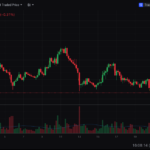Crypto investment momentum continues as institutional money pours into digital asset funds, pushing assets under management (AUM) to near-record levels. In the last week alone, U.S. crypto funds attracted $882 million in net inflows, contributing to a four-week total of $6.3 billion—representing 93% of all year-to-date inflows, according to CoinShares.
Bitcoin Dominates the Flow
Bitcoin remains the primary magnet for capital, raking in $867 million in inflows last week and reaching $6.6 billion in YTD figures. The total AUM for Bitcoin funds has climbed to $146 billion, helping lift the global crypto fund total to $169 billion—just 2.5% short of the $173.3 billion record set in January 2025.
Ethereum lagged behind with only $1.5 million in new inflows, while Solana saw outflows of $3.4 million. Interestingly, Sui stood out among altcoins with $11.7 million in inflows, hinting at growing investor curiosity beyond the top assets.
BlackRock Leads, Grayscale Slips
BlackRock’s iShares ETFs continue to lead the charge, accounting for $1 billion of last week’s total. Year-to-date, BlackRock has pulled in $8.1 billion—surpassing the entire sector’s net inflow of $6.7 billion. Meanwhile, legacy players like Grayscale and Bitwise saw further outflows of $168 million and $27 million, respectively.
Macro Winds Fuel Demand
CoinShares analyst James Butterfill points to a mix of macroeconomic drivers behind the renewed interest. These include the global rise in M2 money supply, inflation risks, and a growing trend of U.S. states treating Bitcoin as a strategic reserve.
Bitcoin’s price, now hovering around $104,000, reflects this optimism—up sharply from recent months and closing in on its all-time high above $106,000.
Why It Matters
This sustained capital inflow underscores a maturing investment landscape where institutions are not just testing the waters—they’re diving in. With Bitcoin approaching historical highs and ETF interest setting new records, retail investors may begin to re-evaluate their positioning in this expanding market.
However, timing any entry or exit point requires caution.
This article is for informational purposes only and does not constitute investment advice. Always do your own research before making financial decisions.







